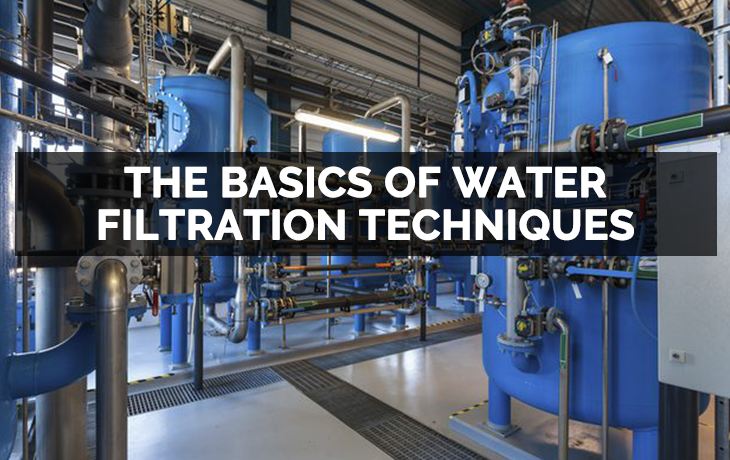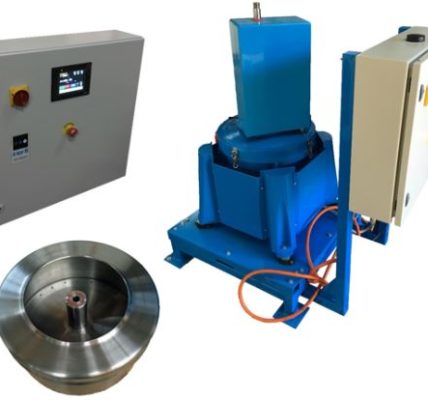Changes in weather patterns, reduced precipitation levels and large-scale irrigation have reduced the amount of fresh water available for domestic and industrial use in cities over time. This has led municipalities to research and invest in several water treatment technologies in order to reduce losses and recycle the water available.
Filtration has been found to be one of the least intrusive methods to treat wastewater. Filtration is basically the separation of suspended solids from a fluid like water or gas. The contaminated fluid is passed through a filtration medium that can only allow the substances below a predetermined size to pass through it. This leaves the contaminants behind as the filtrate goes through the medium.
Basic Wastewater Filtration Techniques
Today, there are several filtration techniques to choose from depending on the type of contaminants and fluids you are dealing with. In this article, we will look at a few types of filtration techniques that are in use today when separating solids from wastewater as well as their basic operation.
1. Strainers
The most basic filtration technique when treating wastewater today is the use of strainers. Strainers are basically thin physical barriers preventing large objects from getting into the treatment system. They are usually made of plastic or metal and attached to the water inlet to filter out logs, large fish and large plastics.
The treatment facilities often have smaller strainers installed further down the line to filter smaller contaminants such as silt and algae. These are known as micro-strainers and are usually made of a fine metal fabric or synthetic fibre.
2. Precoat Filtration
This filtration technique involves the application of an inert filtration medium onto a porous straining surface. The filtration medium could be made up of loose fibres, powders or diatomaceous earth, which works to improve the efficiency of the process. In this technique, only a thin layer of filtration media is used, and it is cleaned out with the accumulated detritus once the resistance to flow becomes too high.
3. Slow Sand Filtration
Slow Sand Filtration used to be the primary technique used to filter potable water. It is currently being edged out by Rapid Sand Filtration techniques which treat larger volumes of water at a time. However, the slow sand filtration is still widely used in municipal water treatment because it is not costly or labour intensive.
In Slow Sand Filtration, a large bed of fine sand is used to strain wastewater. A layer of debris is accumulated within the upper 20 cm stratum of sand and it is allowed to develop biological activity. This layer of debris is normally referred to as the ‘schmutzdecke’ and it largely contributes to the biological treatment of the water in the filtration system.
In order for this filtration method to be effective, the wastewater must not have any chemical or disinfectants added to it before entering the slow sand filter as they would disrupt the biological activity of the schmutzdecke.
This process is cost effective and it can take up to 3 months before you need to replace the sand due to high resistance to flow. The sand is usually taken out in small depths of about 5cm deep until the film of sand left in the filter is too thin to culture an effective biological treatment layer.
4. In-Depth Granular Media Filtration
In-depth Granular Media Filtration is a technique in which a thick bed of filtration media is used to filter out detritus from the water. The main filtration medium here is usually large grained sand and often accompanied with anthracite. The sand or anthracite particles used in this method range from 0.5 to 2.0 mm so as to let the water flow rapidly through the filtration bed.
The main types of filtration that employ the in-depth granular media filtration technique are the Rapid Gravity and Pressure Filtration. Rapid Gravity Filtration uses the natural force of gravity while Pressure filtration puts the wastewater under hydraulic pressure to distribute and control flow between filters. In-depth filtration works best with water that has undergone prior coagulation and clarification.
New Forms of Filtration
The high demand for filtration and new applications has led to the development of several new wastewater filtration techniques. Many of these are specialized applications and are also quite costly technologies. Below is a list of some new filtration methods that are used in wastewater treatment.
- Upflow Filtration
- Membrane Filtration
- Cell Filtration
- Horizontal and Radial Filtration
Conclusion
Filtration is not an exact science and new developments are coming up rapidly. The basic technologies are still invaluable as a lot of municipalities still use them and enjoy their relative cost-effectiveness. Methods to improve the efficiency of the older technologies are being researched and have had some positive results especially in reducing labour and material costs.
Read More:
What are Industrial Centrifuges Made from and for?
Why It’s Important to Check Fuel for Contamination




